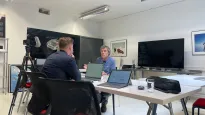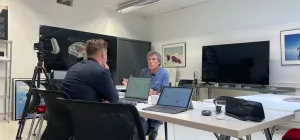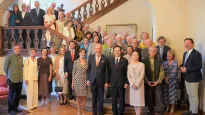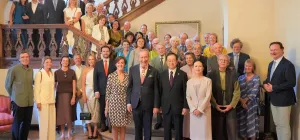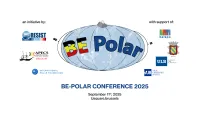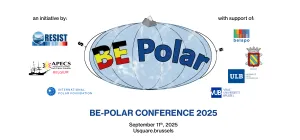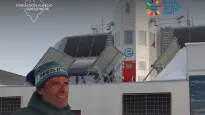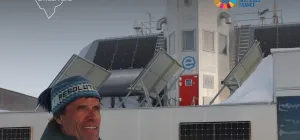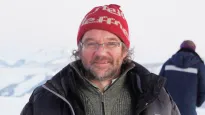Busy Seasons at PEA, Rich in Science
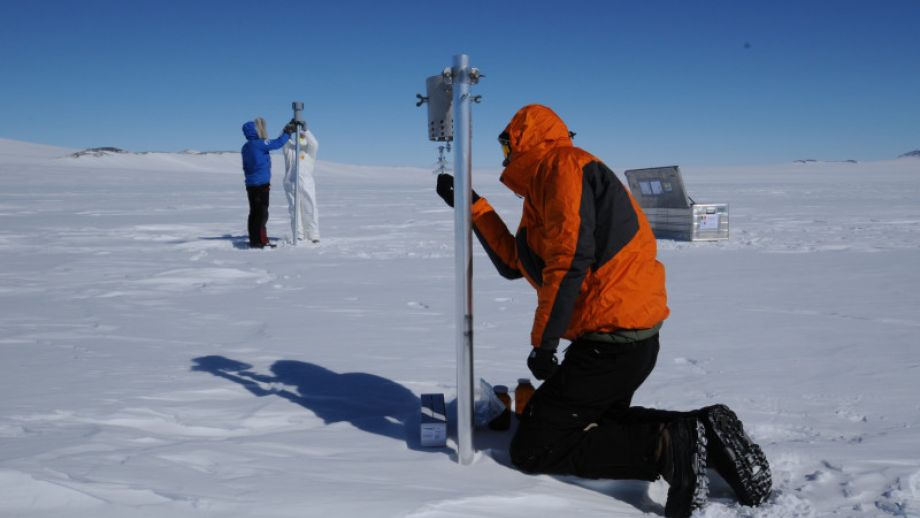
After a hiatus, we would like to welcome back our regular readers to the official website of the Princess Elisabeth Antarctica, the world's first ever zero-emission polar research station. Since we last posted on this website, a lot of world-class science has been undertaken at the station. We’ve put together a quick summary of some of the major research projects that have taken place at the Princess Elisabeth Antarctica and its vicinity during the last few seasons.
Abuzz with scientific fieldwork
The last few seasons have seen their fair share of scientific research expeditions. The Belgian Antarctic Research Expedition (BELARE) team led by the International Polar Foundation has been there the entire time to support scientists. Below is a short summary of many of the incredible scientific projects that have taken place over the last few seasons:
One impressive scientific achievement happend during the MASS2ANT project led by Prof. Jean-Louis Tison at the Université Libre de Bruxelles. His team of researchers has been looking to better understand the mass balance of the Antarctic Ice Sheet over time in the Princess Ragnhild Coast in East Antarctica. During the 2018-2019 research season, his team extracted an ice core at a record depth of 260 metres from an ice rise at the coast, about 200 km from the station (normally it’s difficult to drill that deep into an ice shelf). The ice cores are being analysed in Brussels to determine variation in ice mass balance in the region over time.
Meanwhile, the CHASE project has been building a unique database of organic and inorganic particles suspended in the atmosphere and on the snow surface in the vicinity of the Princess Elisabeth station. When researchers from the Royal Meteorological Institute of Belgium (KMI/IRM), Ghent University (UGent), the Universtié Libre de Bruxelles (ULB) or the Vrij Universiteit Brussel (VUB) have not been present at the Princess Elisabeth, station engineer Benoît Verdin has been doing maintenance on the instruments to keep them collecting data.
Researchers from the University of Bern in Switzerland have been trying to reconstruct past ice sheet coverage under the DEAIS project thanks to a technique called cosmic sampling. Knowing how the ice sheet’s coverage has varied in the past can help researchers determine how it might change in the future.
Researchers from Ghent University and the University of Liège have been mapping microbial life in the ice-free areas of the Sør Rondane Mountains near the Princess Elisabeth Station in the MICROBIAN project. During their visits to Antarctica, researchers have been taking samples, installed monitoring equipment and used drones to make high-resolution maps of their study area in the Sør Rondane Mountains close to the station.
The "From Clouds to Ground: Snow Deposition in Extreme Environment" and LOSUMEA projects, led by researchers from the WSL Institute for Snow and Avalanche Research (SLF) and the CRYOS lab at the Polytechnic School of Lausanne (EPFL) in Switzerland have been investigating the relationship between snow deposition and surface mass balance of the Antarctic Ice Sheet. They’ve sought to clarify the relationship between precipitation, drifting and blowing snow, and ice formation.
Belgian researchers from the Vrij Universiteit Brussel (VUB) and the Université Libre de Bruxelles (ULB) have been hunting for micrometeorites in Antarctica, as they can offer clues about the formation of the solar system. Antarctica is a great place to look for micrometeorites, as the blue ice fields not far from the Princess Elisabeth Antarctica Station preserve them very well and make them easy to detect. A team went to Antarctica during the 2017-2018 season under the BELAM project, and another team plans to return to Antarctica during the 2019-2020 season to look for more meteorites.
The International Polar Foundation's Science Liaison Officer, Henri Robert, has been studying refugia (areas where species have avoid extinction during time of massive climate change) in Antarctica for the Royal Belgian Institute of Natural Sciences under the RECTO project. During the 2017-2018 season, Henri focused on monitoring snow petrel populations, detecting and mapping their breeding grounds and taking DNA samples for an overall population comparison, all while disturbing the birds as little as possible.
Continuing his commitment to helping scientists from the Glaciology Laboratory at the University of Grenoble Alpes in France, Team Leader Alain Hubert has continued to take snow depth measurements along a transect between Crown Bay at the coast and Vesthaugen Nunatak not to far from the station.
Baillet-Latour continues to support science
Of course, the bi-annual Ballet Latour Fellowship has continued to fund the research of early career polar scientists.
2016-2018 Fellowship laureate Dr. Lori Ziolkowski, Canadian scientist affiliated with the University of South Carolina in the US, was awarded the prize for the REMACA project, which was estimating the age of carbon and microbial activity in East Antarctica, with the goal to understand past microbial diversity and climate patterns in the region. Her research findings will be able to contribute to any studies about past climate patterns and microbial diversity in East Antarctica
Lori was followed by 2018-2020 laureate Dr. Kate Winter form Northumbria University in the UK for her BioFe project, which is studying the transport of mineral nutrients in sediments from nunataks to the Southern Ocean via the movement of glacial ice. This is important research as the nutrients feed primary producers in hte Southern Ocean such as phytoplankton, which can take in carbon dioxide from the atmosphere as they grow and sequester this carbon at the bottom of the ocean after they die. Lori’s project was even featured on Bloomberg News!
Instruments continue to collect data
For many ongoing projects, it’s not always necessary to have scientists on-site.
The GEOMAG project has continued to take measurements of Earth’s magnetic field, with new instruments installed during the 2018-2019 season and maintenance done on instruments that researchers from the Royal Observatory of Belgium (KMI / IRM) first installed there during the 2015-2014 season.
For the ACME project (a collaboration between the Belgian Royal Meteorological Institute (KMI / IMR), the International Polar Foundation (IPF), and the Swiss Federal Institute for Forest Snow and Landscape Research (WSL)), each day during the course of each season, a member of the BELARE team has been releasing a weather balloon with instruments to profile temperature, wind speed, humidity, precipitation, and air pressure as the balloon rises into the atmosphere.
A collaboration between KU Leuven, the Belgian Royal Meteorological Institute (KMI / IMR), and the Belgian Institute for Space Aeronomy (BIRA-IASB), the AEROCLOUD project has sought to build a database of cloud, precipitation, and aerosol properties near the Princess Elisabeth station.
The ADWA project led by the Belgian Institute for Space Aeronomy (BIRA-IASB) has been collecting natural very low frequency (VLF) electromagnetic waves (0 - 10 kHz) to pick up “whistler waves” (pulses of low frequency waves in the atmosphere that propagate around Earth’s ionosphere following the planet’s magnetic field lines).
For more than 10 years the GIANT project (managed by the Royal Observatory of Belgium, the University of Luxembourg and the Royal Military Academy of Belgium) has been collecting GPS, gravimetry and seismology data to track both horizontal and vertical deformation of Earth's surface in order to see how changes in ice mass in the Polar Regions contributes to this deformation.
Seismometers at the Princess Elisabeth have also been collecting seismic data for the SEISMO project over the last decade with the aim of obtaining more insight into the planet’s lithosphere and seismic activity in East Antarctica.
Passing through?
The BELARE team has also helped researchers passing through the region on broader scientific missions.
During the 2018-2019 season, BELARE team members helped an international group of researchers taking part in the Beyond EPICA project during their trek to Dome Fuji on the Antarctic Plateau. Beyond EPICA aims to eventually drill an ice core at Dome Fuji, which many scientists hope will contain ice as old as 1.5 million years, which will give clues to Antarctica’s climate dating back that far.
Scientists from the Alfred Wegener Institute (AWI) in Germany have often used the Princess Elisabeth station as a base to conduct aerial surveys over East Antarctica in AWI’s Polar 6 aircraft. During the 2018-2019 season, AWI scientists took radar profiles of ice along transects at the coast and on the Antarctic Plateau in order to study the thickness and density of both the Antarctica Ice Sheet and ice shelves at the coast.
The work continues
During the current and upcoming seasons, the BELARE team will remain committed to supporting the efforts of researchers working at or in the vicinity of the Princess Elisabeth Antarctica.
Coverage of the 2019-2020 begins soon!
Download


